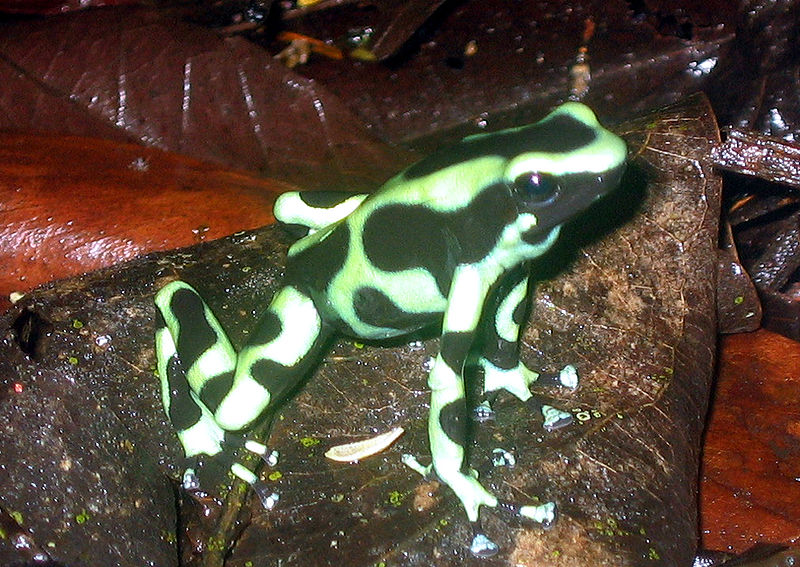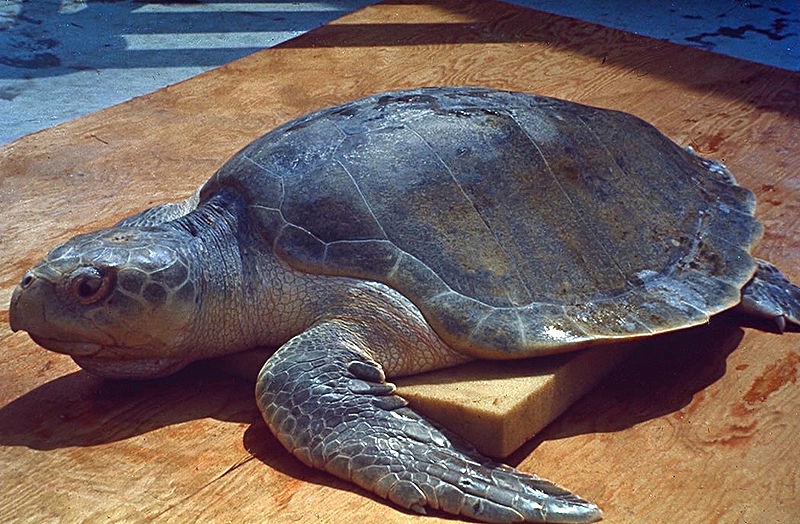 Many turtle keepers here in the USA can recall seeing hatchling Red-Eared Sliders with gaily-painted shells being offered for sale at pet stores and carnivals. Thankfully, through education and the passage of legislation, that practice, which killed thousands if not millions of turtles, is no longer with us. Unfortunately, an equally-horrific new fad has recently popped up in China, where millions of young African Clawed Frogs are being colored with industrial dyes and sold as short-lived “novelties”.
Many turtle keepers here in the USA can recall seeing hatchling Red-Eared Sliders with gaily-painted shells being offered for sale at pet stores and carnivals. Thankfully, through education and the passage of legislation, that practice, which killed thousands if not millions of turtles, is no longer with us. Unfortunately, an equally-horrific new fad has recently popped up in China, where millions of young African Clawed Frogs are being colored with industrial dyes and sold as short-lived “novelties”.
Torturing Sensitive Creatures
A thin, sensitive skin pre-disposes frogs to a variety of environmental hazards, and may be one of the factors behind the recent extinctions of hundreds of species worldwide. Permeable to water, oxygen and chemicals, frog skin is marvelous yet delicate, and easily irritated by any exposure to less-than-ideal environments.
So just imagine the effect of injections of industrial dyes! Actually, any animal would be horribly injured or killed by such a practice…in fact, the dyes being used on the frogs are reportedly dangerous for people to handle.
As you can see from article linked below, the frogs take on neon hues of pink, yellow, green and other colors, and appear more like plastic toys than live animals – a situation that makes it more likely they will be treated as objects and not living creatures in need of care.
Larger Issues: Animals as Objects
In addition to the outright killing of frogs, the practice of dyeing them raises the larger issue of how they are perceived. In this article, for example, the author has not even bothered to identify the type of frogs that are being sold, and even makes light of the situation – suggesting that the frogs sell-out so fast that prospective owners may need to dye their own! The author callously goes on to note that the dyes should last 3-4 years “…by which time the frogs will probably be long dead anyway”.
As you can see by the video linked below, sellers also show little regard for the doomed creatures’ needs – the dyed frogs pictured there are held in a bare tank of filthy water in which float dead fishes.
A Life-Saving Frog
Ironically, so much of interest could have been written about African Clawed Frogs. Once used as the basis for pregnancy tests (the Hogben Test), these frogs have been used in medical research for decades, and have saved countless human lives. Captives become quite responsive and have lived for nearly 30 years, and educational kits featuring Clawed Frog tadpoles have introduced millions of school children to the wonders of metamorphosis. I could go on…please see the article below for more on this most unique amphibian.
“Tiger Dogs” and other Odd Fads
Apparently, “plain” animals are not interesting enough for many modern-day consumers in China and elsewhere these days. Fishes confined to lockets are still being sold, and in the past few years the practice of coloring dogs to resemble tigers, pandas and other creatures has become fashionable (please see article below).
Reporting Animal Abuse
Please read my article on Reporting Animal Abuse (USA), and of course feel free to write in for advice; in most cases I’ll be able to direct you to an appropriate local authority if you have witnessed animal cruelty or abuse.
Further Reading
Video of Dyed Frogs Held under Terrible Conditions
African Clawed Frog Behavior
White clawed frog image referenced from wikipedia and originally posted by Museoftheviolets
 Chameleons, the most unique of all lizards, are truly marvelous creatures to know and care for. In the past, I’ve written about Veiled, Dwarf and Senegal Chameleons, and related topics (please see articles below). Today I’d like to discuss some general principals of chameleon care.
Chameleons, the most unique of all lizards, are truly marvelous creatures to know and care for. In the past, I’ve written about Veiled, Dwarf and Senegal Chameleons, and related topics (please see articles below). Today I’d like to discuss some general principals of chameleon care. That Reptile Blog – Reptile, Amphibian and Exotic Pet Care and Information
That Reptile Blog – Reptile, Amphibian and Exotic Pet Care and Information




